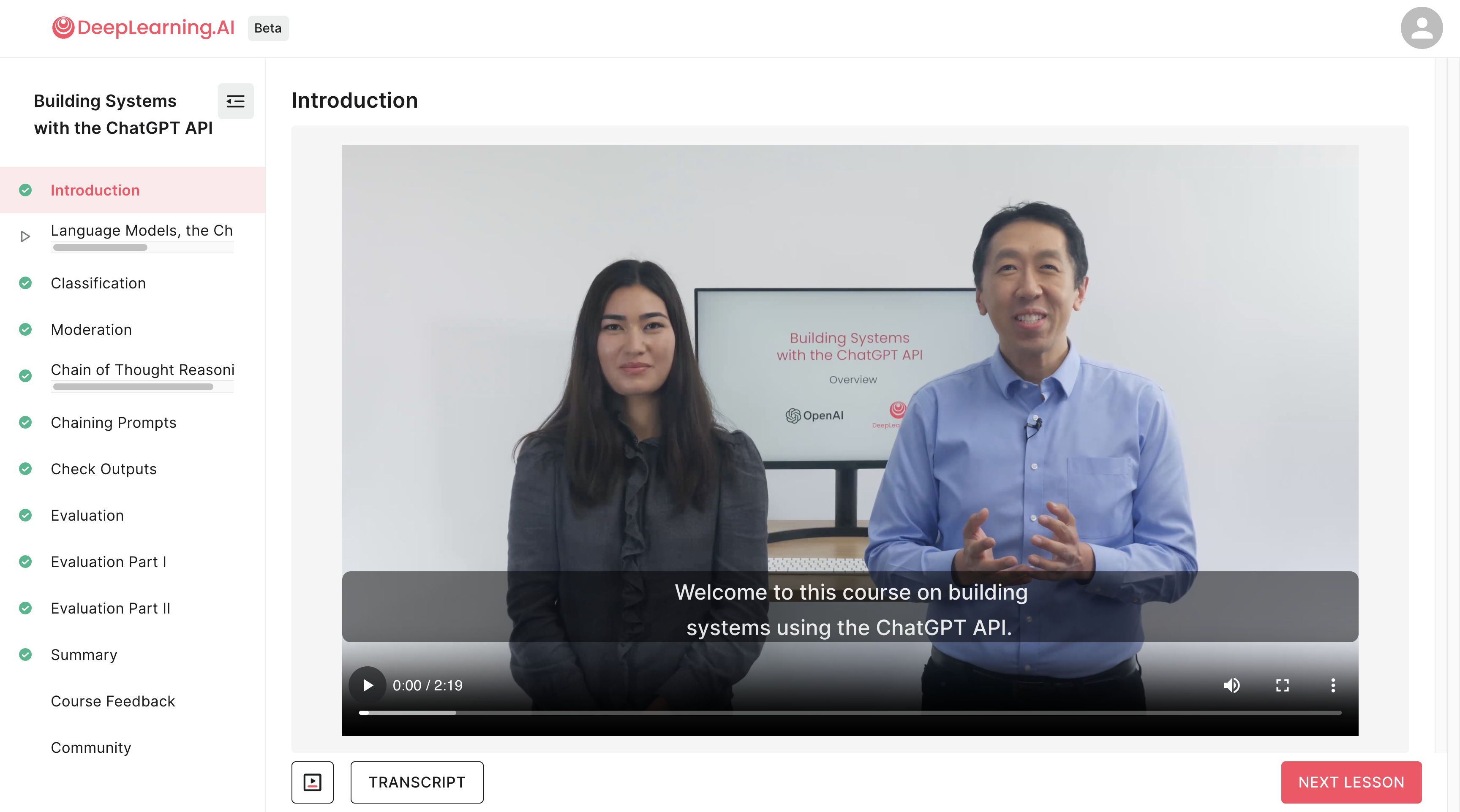- Published on
Building Systems with the ChatGPT API
- Authors

- Author
- Breydan Tan
Topic

Building Systems with the ChatGPT API
Andrew Ng and Isa Fulford's released great course called ["Building Systems with the ChatGPT API"(https://learn.deeplearning.ai/chatgpt-building-system/lesson/1/introduction),on DeepLearning.AI site.
I've followed on-screen instructions to re-create their practical Jupyter notebooks and sharing the my note and code here .
- Language Models, the Chat Format and Tokens;
- Classification;
- Moderation;
- Chain of Thoughts;
- Chaining Prompts;
- Check Outputs;
- Build an End-to-End System;
- Evaluation - Part 1;
- Evaluation - Part 2.
Comprehensive Guide to AIGC and OpenAI's ChatGPT API
This guide is a deep dive into Artificial Intelligence Generated Content (AIGC), focusing on Language Models and their practical implementation using OpenAI's ChatGPT API, as demonstrated in a Jupyter notebook.
Part 1: Understanding AIGC
Language Models and the Chat Format
- How Language Models Work:
- Utilizing Supervised Learning, these models are trained to predict the next word in a sequence.
- Prompt-based AI is a powerful approach, allowing quick and efficient model utilization.
- Types of Language Models:
- Base LLMs predict the next word based on training data.
- Instruction Tuned LLMs (like ChatGPT) follow input instructions more accurately.
- From Base LLM to Instruction Tuned LLM:
- Training on large datasets and fine-tuning with examples that follow specific instructions.
- Using human feedback to improve the model’s outputs.
Tokens
- Tokens represent words or parts of words.
- The tokenization process can vary based on word frequency and model design.
System, User, and Assistant Messages
- Different roles are defined for each entity interacting with the LLM.
Additional Concepts
- Classification, Moderation, Prompt Injections, and Chain of Thought Reasoning are essential in shaping the interaction with LLMs.
Part 2: Practical Application with OpenAI's ChatGPT API
Setting Up the Environment The Jupyter notebook begins with the setup required for using the OpenAI API, particularly focusing on integration with Azure's OpenAI services.
import openai
import os
# Define Azure OpenAI endpoint parameters
openai.api_type = "azure"
openai.api_version = "2023-05-15"
openai.api_base = os.getenv("OPENAI_API_BASE")
openai.api_key = os.getenv("OPENAI_API_KEY")
aoai_deployment = os.getenv("OPENAI_API_DEPLOY")
Helper Functions for API Interaction
- Basic API Call Function
- A function get_completion simplifies the process of sending prompts and receiving responses..
def get_completion(prompt, engine=aoai_deployment):
messages = [{"role": "user", "content": prompt}]
response = openai.ChatCompletion.create(
engine=engine,
messages=messages,
temperature=0,
)
return response.choices[0].message["content"]